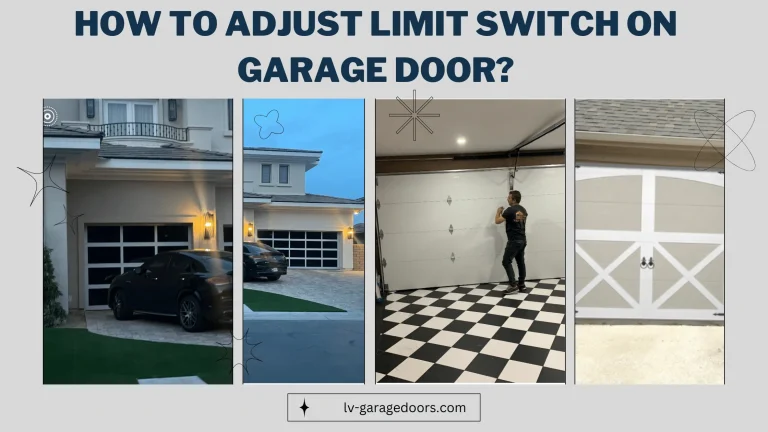How Many Turns On A 7ft Garage Door Spring? #1 Solution
The garage door springs are crucial components of a garage door system. Properly maintaining the tension of garage door springs is crucial to ensure safe and efficient door operation. This guide aims to provide an answer to your question about the number of turns required on a 7ft garage door spring.
We will explain the different types of springs, how to determine which type you have, and how many turns on 7ft garage door spring are required. We also provide additional information such as safety precautions and other maintenance tips. Read on to learn more!
To determine how many turns are required for your 7ft garage door spring, you will need to determine the type of spring. This can easily be done by counting the number of coils and measuring the wire size. For example, a 7ft long torsion spring with 24 coils and 1/2 inch diameter would require approximately 5 turns for proper tensioning.
How To Determine The Number of Turns on a 7th Garage Door Spring?
Let’s now figure out how to decide the correct number of turns for a 7ft garage door spring after discussing the fundamentals of garage door springs.
Consult The Manufacturer Guidelines:
The first and foremost step is to consult the manual provided by the manufacturer. You can refer to it for the number of turns recommended for your garage door spring.
Check The Existing Spring:
If you are replacing an existing garage door spring, the number of turns required for your new spring depends on the type and size of previously installed springs. Make sure to check the label given on the old spring or consult a professional to determine what kind of spring is present in your garage door system.
Consider The Door Weight:
The door weight and its balance need to be taken into account while deciding the number of turns for a 7ft garage door spring. Generally, heavier doors require more turns than lighter doors. If the door is very heavy, then you might need to add some extra turns on the spring after installation.
Measure The Length:
The length of the spring also affects the number of turns you need to install in your garage door system. Measure the length and diameter of the garage door spring before installing it efficiently. Furthermore, if you are converting from a torsion spring to an extension spring, then make sure to use a longer spring with fewer coils as it will apply more force.
Determining the Number of Turns:
Once you have measured the length of the spring, you can then determine the number of turns by dividing the length by 3.5. For example, if the spring is 12 inches long, then it would have 3.5 turns (12/3.5 = 3.5).
Checking for Worn Out Springs:
If your garage door springs are more than seven years old, it is likely that they are worn out and need to be replaced. Additionally, if your garage door is not opening or closing smoothly, this could also be a sign that your springs need to be replaced.
Replacing Worn Out Springs:
If your springs are worn out, it is important to replace them as soon as possible to avoid any potential accidents or injuries. To replace your springs, you will need to purchase new ones from a hardware store or online retailer.
By following the tips mentioned in this article, you can easily determine the number of turns required for a 7ft garage door spring.
Types of Garage Door Springs:
There are two main types of garage door springs. These include:
Torsions Springs:
This type of spring is mounted horizontally above the garage door and can be tensioned to lift heavier doors. It uses a pulley system which helps balance the weight of the garage door. Torsion springs are durable and can last up to 10 years, depending on how often they are used. These springs require approximately 5 turns on a 7ft long spring for proper tensioning.
Extension Springs:
Extension springs are mounted along the sides of the garage door and run parallel to it when closed. It is designed to stretch or extend when the door opens and then contract when the door closes, providing a lifting force to assist in closing the door. Extension spring systems are more affordable than torsion springs but they have a shorter lifespan. Typically, extension springs require about 10-20 turns for tensioning, depending on the type and size.
It is important to remember that proper safety precautions should always be taken when adjusting garage door springs. Make sure to wear protective eyewear and gloves, avoid standing directly under the springs, and use a properly rated wrench or handle for your spring adjustment.
Why is it Important To Know How Many Turns on a 7th Garage Door Spring?
Knowing how many turns on a 7th garage door spring is important due the following reasons:
Maintain Door:
The number of turns on a 7th garage door spring helps maintain the tension on the door and ensures that it operates smoothly. Without enough tension, the door may not open and close as it should.
To Keep Door Safe:
Having the right number of turns on your 7th garage door spring is crucial to ensuring the safety of people and pets around it. This helps prevent unexpected crashes that can result in injuries.
To Preserve Door Life:
Ensuring that the 7th garage door spring has the appropriate number of turns can increase its lifespan and minimize the need for repairs or replacements, resulting in long-term cost savings.
To Reduce Noise:
Properly adjusting the tension on the 7th spring of the garage door can minimize the noise it makes while opening and closing. This is especially crucial for nearby residents or businesses that may be bothered by loud sounds.
Help to Save Money:
When the 7th garage door spring is adjusted correctly, it can help you save money on costly repairs and replacements down the road. Properly maintaining your garage door can also result in a lower energy bill during extreme weather conditions.
Overall, knowing how many turns are required for your 7th garage door spring helps ensure the safety of people around it, lengthen its life, reduce noisy operations, and save you money in the long run. Following the manufacturer’s instructions closely and adjusting the tension at regular intervals is essential for proper maintenance.
Conclusion:
In conclusion, it is important to understand how many turns are required on a 7ft garage door spring to ensure the optimal functioning of the garage door. The number of turns needed will depend on the type of garage door and model, as well as the weight of the door and the size of the torsion bar.
If you need any help determining the number of turns for your garage door, be sure to contact lv-garagedoors for professional services. Our team of experienced technicians can help you choose the right springs and adjust them properly, ensuring your garage door functions correctly.
You Can Also Read:
How to adjust garage door cable tension?
Why is garage door installation important?








